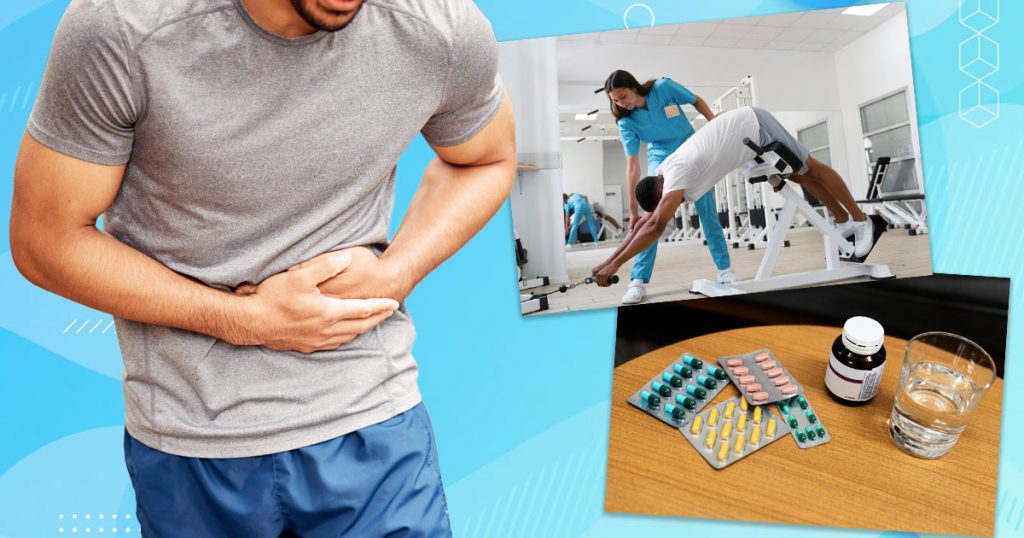A sports hernia is a painful injury that affects the lower abdomen and groin, often occurring in athletes engaged in high-intensity sports. Unlike a regular hernia, no bulging occurs, but the injury can still be debilitating. Understanding how to treat sports hernia is essential for a full recovery, whether through nonsurgical methods or sports hernia surgery.
Understanding Sports Hernia and Its Treatment Approaches
Sports hernia treatment remains a topic of debate among medical professionals. Some recommend conservative methods, while others believe surgery is necessary. Each case is unique, and the right approach depends on the severity of the injury.
1. Rest: The First Step Toward Recovery
Giving the body time to heal is crucial in sports hernia treatment without surgery. Athletes typically need to step away from intense physical activity for a minimum of four to six weeks to allow proper healing. This period allows the strained or torn tissues to repair naturally. Avoiding movements that stress the lower abdomen and groin helps prevent the condition from worsening.
2. Anti-Inflammatory Medications for Pain Management
Pain relievers like ibuprofen (Motrin, Advil) or naproxen (Aleve) can ease inflammation and discomfort. For more severe cases, doctors may prescribe oral steroids. These medications work best when combined with other treatments to support healing and recovery.
3. Sports Hernia Physical Therapy: Strengthening and Rehabilitation
After the initial rest period, a structured sports hernia physical therapy program plays a key role in recovery. Strengthening exercises focus on rebuilding core stability, particularly targeting the abdominal and hip muscles.
Therapists often include:
- Core-strengthening exercises to improve muscle balance
- Stretching routines for the lower abdomen and legs
- Dry-needling and therapeutic massage to relieve tension
- Ultrasound therapy to promote tissue healing
Gradually increasing activity levels under professional supervision helps prevent re-injury and ensures a smoother return to sports.
4. Injections for Pain Relief
When conservative treatments are not enough, injections may provide relief. Various types of injections can help manage symptoms and support recovery.
- Steroid injections reduce inflammation and pain.
- Nerve blocks target the ilioinguinal and iliohypogastric nerves to relieve discomfort.
- Platelet-rich plasma (PRP) injections promote healing by using the body’s natural growth factors.
These treatments can be useful for athletes looking to delay or avoid surgery while continuing therapy.
5. Monitoring and Preventing Recurrence
Preventing future sports hernias requires tackling the underlying issues. Weak muscles, imbalances, and tightness make re-injury more likely. A well-rounded recovery plan should focus on strengthening and flexibility to reduce the risk of recurrence.
- Strengthening core and lower-body muscles
- Improving flexibility through targeted stretching
- Avoid overuse and allow adequate recovery between activities
Athletes should work closely with trainers and therapists to modify training routines and reduce strain on the affected area.
6. Sports Hernia Surgery: When Is It Necessary?
Some cases require surgical intervention when nonsurgical treatments fail to provide relief. Sports hernia surgery involves repairing the damaged tissues with sutures, and in some cases, a synthetic mesh is used for additional support.
Surgical procedures are performed in two main ways:
- Open surgery: A single incision is made to repair the torn tissues.
- Laparoscopic surgery: Small incisions allow a camera and surgical tools to be inserted, reducing recovery time.
Most patients undergo an intensive six- to eight-week rehabilitation program after surgery to regain strength and mobility.
7. Multiple Surgeries for Severe Cases
Some athletes experience repeated injuries or treatment-resistant sports hernias. In such cases, multiple surgeries may be necessary. Each surgery aims to repair the affected area and restore function. However, multiple procedures require extended rehabilitation and close monitoring to prevent complications.
8. Returning to Sports Safely
Recovery from a sports hernia requires patience and proper management. Athletes should follow a gradual return-to-play protocol, ensuring the body is fully healed before resuming high-impact activities. Signs that indicate readiness include:
- No lingering pain during movement
- Restored core strength and stability
- Full range of motion without discomfort
Rushing the recovery process increases the risk of re-injury. Working closely with medical professionals ensures a safe and successful return to sports.
Healing the Right Way
Treating a sports hernia effectively requires the right balance between rest, therapy, and, in some cases, surgery. Every treatment method contributes to recovery, and the best approach depends on the injury’s severity and the patient’s specific needs. Whether following a nonsurgical plan or undergoing sports hernia surgery, a well-structured rehabilitation process ensures the best chances of healing and returning to an active lifestyle.
